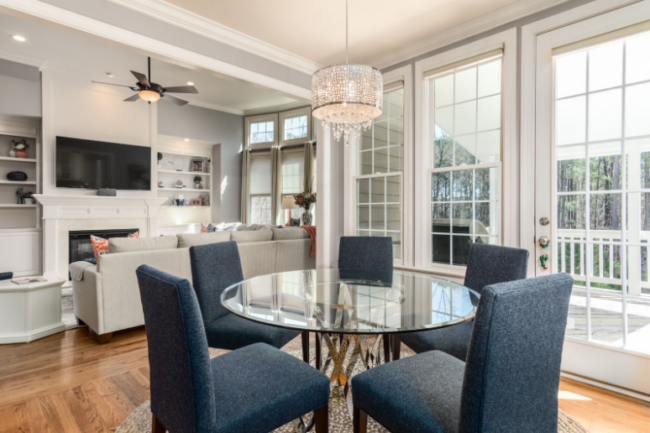What makes a home eco-friendly?

Photo by Douglas Sheppard on Unsplash
As the effects of climate change become ever more apparent, individuals and homeowners are looking to help in any way possible. Cutting down on the carbon footprint of our homes can go a long way to reducing the overall negative consequences of our modern lives on the planet.
There are many elements to our homes, and when determining how eco-friendly yours is, it’s important to consider them all. From the building materials used to construct your home right through to the appliances you choose to use, every detail adds to your home’s overall efficiency and environmental impact.
If you’re looking to renovate your home and want to prioritize making it eco-friendly, there are a few key points to remember. Let’s run through the most impactful changes you can make when designing a greener home.
Opt for eco-friendly materials
When you discuss your home remodel or renovation with your architect or building company, be sure to highlight your eco-friendly goals. This will help the team select sustainable materials for your project, such as reclaimed wood, bamboo, cob, sheeps’ wool and recycled steel.
For your new floors, hardwoods such as Brazilian cherry or white tigerwood are greener options than tiles or carpet as they’re longer-lasting and are grown in sustainable and well-managed forests in South America. Natural linoleum is another great choice, made from linseed oil, plant fibers and limestone.
Choose efficient appliances
Switching your outdated and inefficient appliances, water and heating systems for modern, eco-friendly options will make a huge difference to both the planet and your wallet over the years. Even small changes such as switching to LED light bulbs can save masses of energy and money each year.
Look into installing solar panels to fuel your home with clean energy and reduce your bills, and consider a tankless water heater to have instant hot water with up to 50% less energy used. When it comes to everyday appliances such as washing machines, fridges and ovens, always look at the energy efficiency rating. If you can, opt for A+++ for the most eco-friendly options available.
Decorate responsibly
Traditional paints contain large amounts of volatile organic compounds (VOCs), which are toxic. The fumes from these paints present a health risk to humans and animals, and lower the air quality of the room long after the paint has dried. Also, when you wash your brushes and rollers, the water becomes contaminated with VOCs, which is harmful to our oceans and marine life.
Eco-friendly paints are fast becoming more available, made with energy-efficient manufacturing processes and natural ingredients that won’t risk our health or air quality. They’re safe for people with allergies and respiratory disorders, and also have better color retention and coverage than standard paints.
Green for the win
It can be a lot of fun planning a home renovation, but it’s important to keep sustainability in mind. With so many benefits to be gained from making your home eco-friendly, it’s a project well worth investing in. After all, saving the planet and spending less money on energy bills go hand in hand when it comes to these green upgrades.

